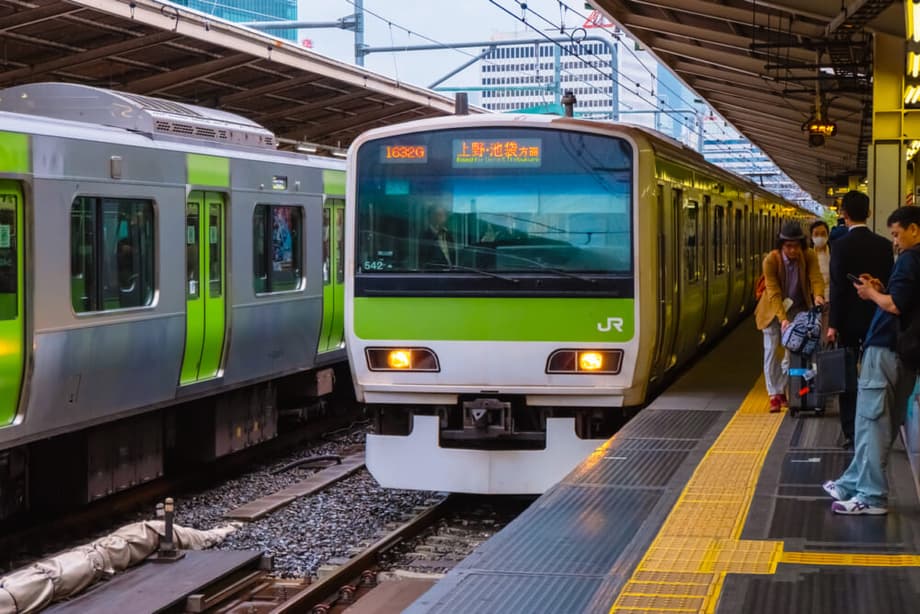A centennial loop that became Tokyos backbone
On November 1, 2025, the JR Yamanote Line marked 100 years since Tokyo completed the last elevated segment between Ueno and Tokyo Stations, closing the loop that today defines the capital’s core. Across a compact 34.5 kilometer circle, the line ties together 30 stations and many of the city’s busiest districts, from Shinjuku and Shibuya to Ikebukuro, Ueno, Tokyo, and Shinagawa. Trains run in both directions every few minutes, a rhythmic circuit that moves people, commerce, and culture with clockwork reliability. In a city often described as many centers rather than one, the Yamanote ring is the thread that binds those centers together.
- A centennial loop that became Tokyos backbone
- From freight corridor to city circle, 1885 to 1925
- Why stations on the loop grew into urban centers
- How the loop organizes daily life and travel
- The Yamanote effect on development and land value
- Reinventing stations and the space above and under the tracks
- Takanawa Gateway and a new wave of smart district projects
- Technology on the rails, automation, access, and sustainability
- Lessons for cities far beyond Tokyo
- Key Points
The loop’s influence goes far beyond transport. It shaped where offices, shops, universities, and entertainment districts took root, and how daily life is organized across wards and neighborhoods. As a rail line that is both a destination and a connector, it has come to stand for Tokyo’s modern identity.
That central role was captured by Satoshi Okuhara, a chief curator at the Railway Museum in Saitama, who has studied the line’s history and public meaning.
The Yamanote line is not just a means of transportation; it has influenced the way the city is organized. It has been a symbol of Tokyo’s development in the past and will remain so in the future.
The centennial drew crowds for a commemorative run that left Ikebukuro and completed the circle in about an hour. Families boarded a train wrapped in a retro design that echoed earlier eras of the line. Tokyo resident Asuka Watanabe, who rode with her toddler, said the special trip felt like an hour that flew by for both children and adults. Another attendee, Kazuki Fujimoto from Machida, said the classic look was nostalgic, a fun way to share the green line with his young son.
From freight corridor to city circle, 1885 to 1925
The Yamanote began as a missing link in Japan’s early rail network. After the country’s first railway opened between Yokohama and Tokyo’s Shimbashi Station in 1872, the Takasaki Line carried goods from Gunma to Ueno by 1883. Those lines were not directly connected, so in 1885 the Shinagawa Line opened between Shinagawa and Akabane to bridge the gap. This new corridor helped move raw silk and other exports from the interior to Yokohama’s port. It was a freight route first, not a commuter service.
Over the next decades the line extended and was renamed Yamanote in 1909. The name points to the hilly districts on Tokyo’s west side where the route ran. Even today, Shinagawa Station still displays the zero kilometer post that once marked the line’s starting point. While railway insiders know that some sections belong to other mainlines, the public experiences a seamless circuit, with clockwise trains on the outer track and counterclockwise trains on the inner track.
The final step came after the 1923 Great Kanto Earthquake, which cleared the way for elevated construction through dense city blocks. In 1925, the elevated segment between Ueno and Tokyo Stations was completed, making the Yamanote a continuous loop. The line later shifted decisively to passenger service as people moved outward to western suburbs and commuted back in through hubs like Shinjuku, Shibuya, and Ikebukuro. A few traces of the past survive, including a single remaining railroad crossing between Tabata and Komagome. It takes about one hour to circle the line, which typically runs from early morning until just after 1 a.m., stopping at night for maintenance.
Why stations on the loop grew into urban centers
The Yamanote’s power comes from what it connects. Private railways extending into the suburbs built their city terminals right on the loop. Those junctions, especially Shinjuku, Shibuya, Ikebukuro, and Ueno, evolved into full urban centers with department stores, office towers, hotels, and cultural venues. Tokyo’s political and symbolic core surrounds the Imperial Palace, which has limited commercial activity, so energy and investment flowed to this ring of stations. The result is a polycentric city where several hubs feel like the center.
City policy embraced that reality. Tokyo’s planning framework recognizes multiple subcenters, many anchored by Yamanote stations. Relaxed planning rules, especially in the 1990s onward, encouraged taller buildings and denser mixed use around key nodes. That shift made stations the natural anchor for new office floors, shopping concourses, and public spaces.
Research on transit oriented development helps explain why the loop’s hubs became so strong. A node place ridership model for Tokyo shows that a station’s network accessibility and service level, often called node value, has a much larger effect on ridership than local land use characteristics, called place value. In that study, node value’s impact was roughly five times higher than place value. Japan Railway stations, including Yamanote stops, showed better coordination between network role and ridership than many subway or private railway stations. The lesson is straightforward. When a station sits at the center of a large network with frequent service, riders follow, and strong activity around the station becomes viable. Tokyo’s government also invested heavily inside the loop by expanding the subway network to relieve crowding, which in turn made transfers at Yamanote hubs even more attractive.
How the loop organizes daily life and travel
The Yamanote works like a sorting wheel for the metropolis. Trains arrive every two to three minutes during peak periods along the 34.5 kilometer circuit. Newcomers can ride one full loop in about sixty minutes and get a rapid snapshot of very different neighborhoods. Nippori and Shinjuku sit only minutes apart by train, yet one feels like old downtown and the other is a symbol of the modern west side. The same ring that carries massive flows to Shinjuku, often called the busiest station in the world, also serves quiet stops like Uguisudani, which sees far fewer boardings.
The line keeps Tokyo connected to a vast archipelago of private lines and subways that fan outward. Commuters and students use the loop’s hubs to transfer to radial lines for Chiba, Saitama, Kanagawa, and beyond. The flow is not only about work. The loop brings people to museums in Ueno, boutique shopping in Harajuku, government and business around Tokyo Station, and nightlife in Shibuya and Shinagawa.
Spaces in and around the infrastructure have become part of city life. Many elevated sections shelter lively businesses under the tracks, a strategy that addresses scarce land and adds street level vitality. The stretch between Ueno and Okachimachi is lined with stalls, eateries, and late night hangouts. Not every under track zone thrives, yet developers and rail operators see these strips as valuable land for small shops, studios, and even social services. The aim is to draw people in, keep the streets active, and make better use of space already served by frequent trains.
The Yamanote effect on development and land value
Living near the Yamanote carries prestige and convenience. The loop shortens travel time to many jobs, universities, and cultural sites, and that proximity has long supported higher land values around certain stations. Over the decades, the pattern of dense commercial districts alternating with residential pockets along the loop has reinforced a daily rhythm of commuting, shopping, and leisure.
After the 1987 privatization of Japanese National Railways, JR East focused on turning stations into urban hubs. Large redevelopment sites on former railway land, such as Shiodome, were transformed into business, retail, and cultural districts. Smaller parcels around Yamanote stations became infill projects with shops and offices, and some gained new plazas or pedestrian decks over the tracks to add public space. At Ebisu and Meguro, JR East built over track complexes that combine transport, shopping, and workplaces on several levels. Shinagawa’s upgrades improved circulation, opened new public areas, and strengthened its role as a major gateway connected to the Shinkansen and the airport monorail.
The broader city shaped the loop, and the loop shaped the city. West of the ring, private railways created dense networks of branch lines and communities. To the east, waterways and reclaimed land limited earlier expansion, though redevelopment has advanced there in recent decades. Across the metropolis, many trips still begin and end at a Yamanote hub, which helps explain why the loop remains central to both property decisions and daily routines.
Reinventing stations and the space above and under the tracks
Stations on the loop now act as full service urban centers. Over the past three decades, ticket gates and concourses have grown into shopping streets, with food halls, bookstores, and services that blur the line between station and city. Building over the tracks at select sites has unlocked valuable floorspace. These decks hold offices, hotels, and clinics while keeping transfers efficient at ground level. In places where widening footprints was impossible, operators carved out new pedestrian routes and small plazas to reduce congestion and improve safety.
Under the tracks, narrow plots become a creative canvas. Some corridors host izakaya and boutiques, others add family services, co working rooms, or fitness studios. Real estate under viaducts has special challenges, from noise to vibration, and not every location succeeds. Even so, the trend is clear. Rail corridors are no longer dead zones. They are part of the everyday city, especially in areas where developable land is scarce and expensive.
Takanawa Gateway and a new wave of smart district projects
The most visible example of the loop shaping future development sits between Shinagawa and Tamachi. Takanawa Gateway Station opened in 2020 as the thirtieth Yamanote stop. Around it, Takanawa Gateway City began a partial opening in March 2025 on a 9.5 hectare site once used as a rail depot. The plan adds offices, retail, an international convention center, and a hotel, with cultural facilities and public spaces designed for events. KDDI and other firms will relocate offices there, bringing thousands of workers to the district.
The project doubles as a showcase for transport innovation. Demonstrations include autonomous mobility vehicles moving through pedestrian plazas and hydrogen powered service robots for deliveries and security. Visitors can see prototypes for new ticketing technology, such as QR code gates, and explore a gallery that traces how Tokyo grew around its railways. The development sits minutes from Haneda Airport, and future services like urban air mobility are part of the long range vision. It is one more sign that major change in Tokyo often starts at a Yamanote address.
JR East president Yoichi Kise used the centennial to describe what the loop means for work, leisure, and visitors. Introducing the latest station area projects, he framed the line as both a tool for daily life and a way to experience the city.
It is valuable as a commuting tool and a tourism resource. We are proud of the century behind us and focused on the innovations that will keep this line vital for the next one.
Technology on the rails, automation, access, and sustainability
JR East plans to introduce driver only operation on the Yamanote Line around 2030, supported by safety monitors and advanced train control. By about 2035, the goal is for trains to run automatically without a licensed driver onboard, a form of automatic train operation. That approach uses precise signaling and onboard systems to manage speed, stops, and spacing, a useful tool for a line with very frequent service and tight schedules. Automation can help address future labor shortages while maintaining safety and punctuality.
Access has improved in parallel. Stations continue to add elevators, platform screen doors, and guidance for people with disabilities. Contactless fare systems such as Suica have become standard, and experiments with new digital ticketing aim to reduce queues and simplify transfers. On the energy side, the operator invests in efficient rolling stock and station facilities and has tested ways to cut waste, from LED lighting to better management of heating and cooling. Large new districts like Takanawa Gateway City include programs for recycling and resource recovery, such as biogas production from food waste.
The loop’s reliability rests on countless routines. Trains start around 4:30 a.m. and stop after 1:00 a.m., leaving a short nightly window for crews to conduct inspections, renew rails, and test equipment. That discipline, refined over decades, keeps one of the world’s most complex metropolitan rail networks in good working order.
Lessons for cities far beyond Tokyo
The Yamanote Line offers clear guidance for city builders. A ring works when it is not an isolated circle but the anchor of a much larger network. The loop thrives because it touches almost every major destination in central Tokyo and connects smoothly to private railways and subways that reach deep into suburbs. Frequent service gives the circle its pulse, and station area development ensures there is always something worth arriving for.
Planning also matters. Tokyo’s embrace of many centers created a flexible structure that spreads jobs and activity and prevents a single core from choking on demand. Research on node, place, and ridership shows that linking high accessibility stations to dense, mixed use districts leads to reliable demand, while through services make transfers easier and journeys faster. It is a model that can inform other large cities, provided operators and governments coordinate transit investment with station neighborhood change.
The Yamanote began as a freight corridor, then grew with the city through disaster, reconstruction, and rapid growth after the war. It still adapts, from new station districts to automation on the rails. That longevity comes from a simple premise, a ring that brings people where they need to go and invites each station to be a center in its own right.
Key Points
- JR Yamanote Line marked 100 years as a complete loop on November 1, 2025, after the 1925 completion of the elevated segment between Ueno and Tokyo Stations.
- The loop is 34.5 kilometers long with 30 stations, connecting Tokyo’s major hubs and running trains in both directions with very frequent service.
- It began as a freight link in 1885 and evolved into a passenger backbone, shaping polycentric growth around stations like Shinjuku, Shibuya, and Ikebukuro.
- Research indicates node value, network accessibility and service, has a much stronger effect on ridership than place value, helping explain strong activity at Yamanote hubs.
- After privatization, JR East turned stations into urban centers with over track complexes, new plazas, and retail, while large sites like Shiodome were redeveloped.
- Under track spaces host shops and services, part of a broader push to use scarce land near frequent transit.
- Takanawa Gateway Station opened in 2020, and Takanawa Gateway City began opening in 2025, showing how new districts anchor to the loop.
- JR East plans driver only operations around 2030 and automatic train operation by about 2035, alongside ongoing access and sustainability upgrades.
- The Yamanote model blends a ring with strong radial lines and station area development, a pattern other large cities can adapt.




